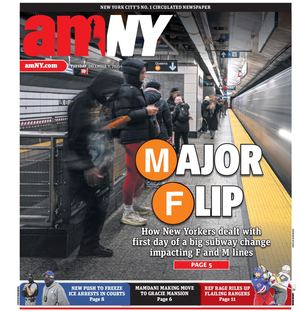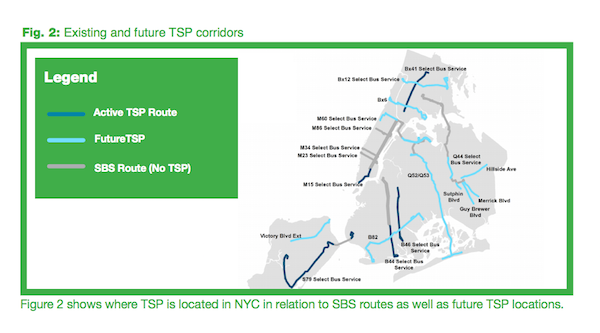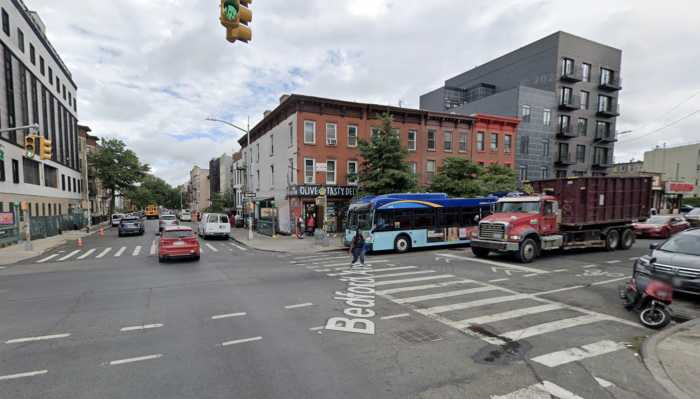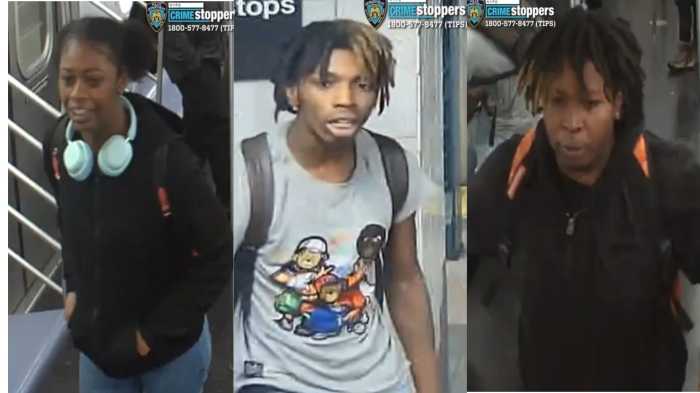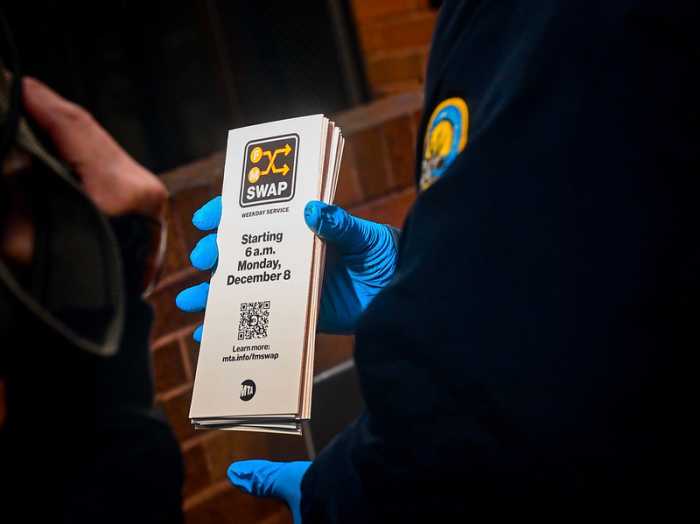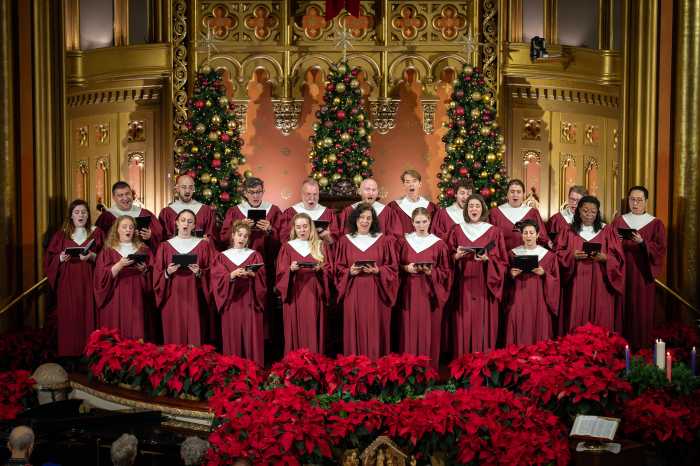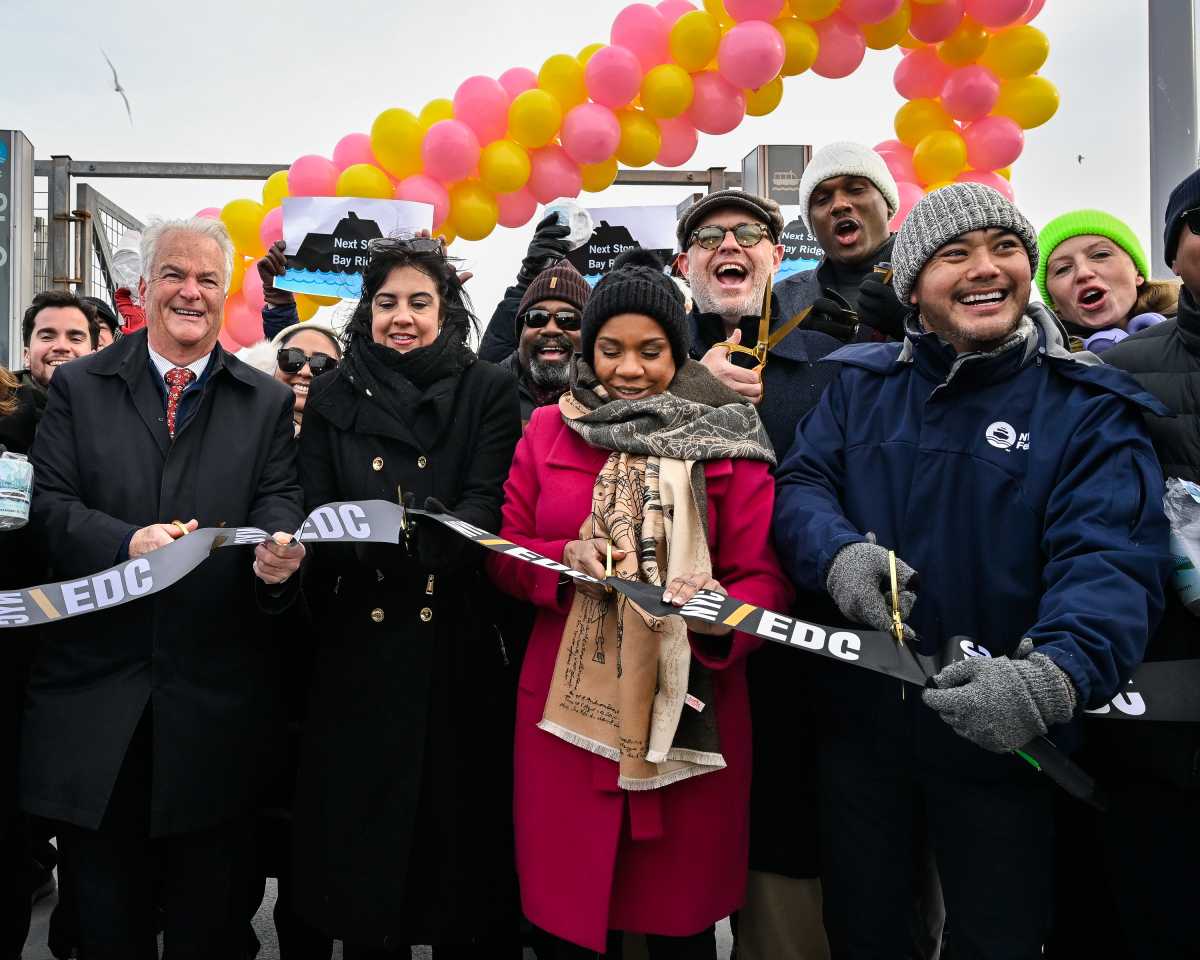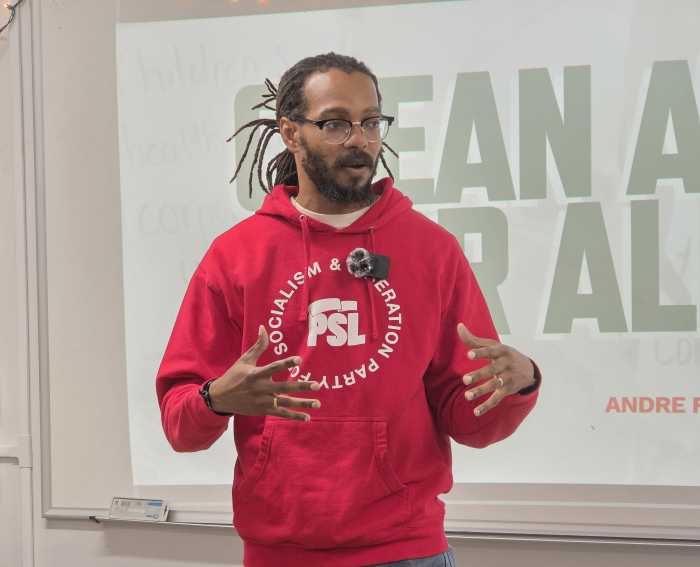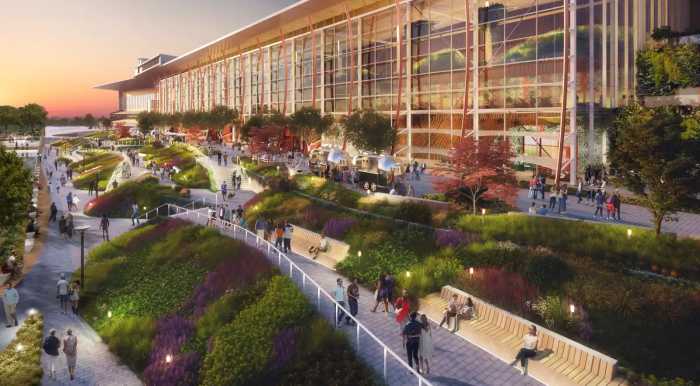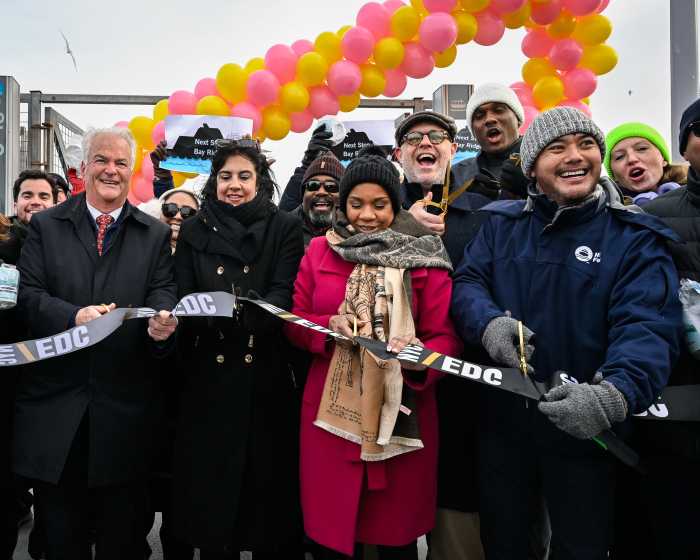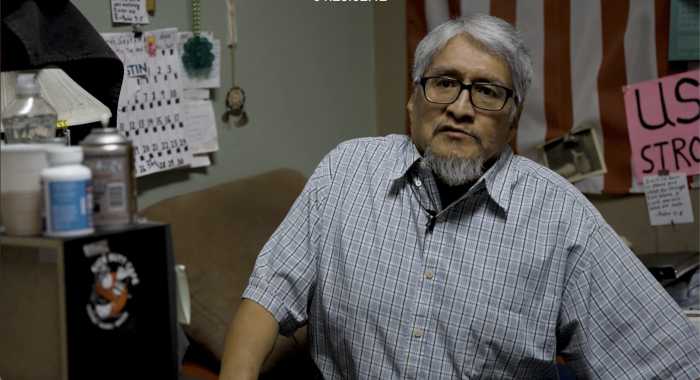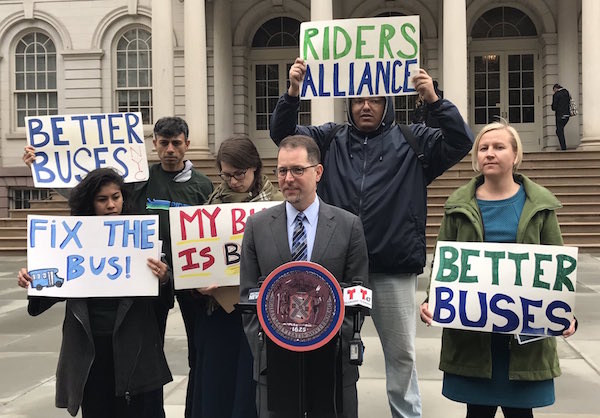
TSP, a joint push by the Metropolitan Transportation Authority and the city’s Department of Transportation, has both passive and active priority systems, according a July 2017 DOT report titled “Green Means Go.” Passive TSP means traffic signals are coordinated to help the flow of traffic along a bus route. Active TSP allows coordination between a bus and traffic lights, either to extend a green light or shorten a red light.
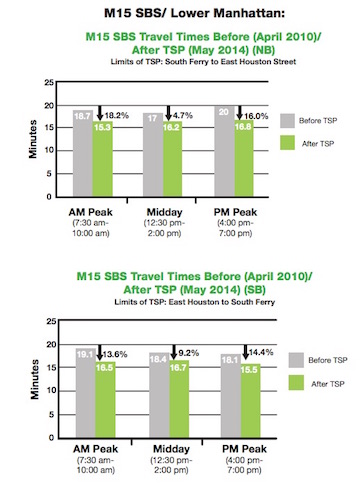
“It allows the bus to communicate to the street light,” explained Stephanie Burgos-Veras, community organizer for the Riders Alliance, a grassroots organization and part of the BTC. “If you don’t have to stand behind every single red light that moves things a bit quicker.”
The BTC consists of the TransitCenter, a foundation that supports transit reform across the country; the Tri-State Transportation Campaign, a nonprofit advocacy organization serving New York, New Jersey, and Connecticut; the New York Public Interest Group’s Straphangers Campaign; and the Riders Alliance. The coalition released a citywide report card in August 2017 of the past year’s bus performance.
According to the report card, “despite the MTA’s recent move to finally begin procuring the software that will allow city buses to interact with traffic lights, which can speed bus trips up to 30 percent, the de Blasio administration has revealed that it plans to implement only 15 additional signal priority projects… between now and 2020.”
“Four years, 15 routes,” Burgos-Veras said, adding about Levine’s legislation, “This bill is asking the DOT to quicken that timeline and add 10 per year. By 2020 there should be an additional 55… There are 236 lines and if the DOT continues to go at this pace they have set themselves up to, it will take New Yorkers much longer for them to see the bus service.”
The DOT said it plans to review the legislation.
According to a late November report released by City Comptroller Scott Stringer, the bus system lost 100 million passenger trips in the last eight years, largely seen in Manhattan, where ridership has been down 16 percent since 2011. The report also highlighted that while subways were initially created to serve commuters traveling into Manhattan, now many people are living and working within their own boroughs, where bus transit needs to become more reliable.
The DOT released a list of 13 routes currently slated for TSP implementation. Only one of the routes is in Manhattan, the M60 SBS — select bus service that runs from 106th St. and Broadway north to 125th St., then across town and into Queens for its destination at LaGuardia Airport. Meanwhile, six are on tap for Queens, and two each for Brooklyn, the Bronx, and Staten Island. The BTC released its own “TSP Target List” identifying priority local routes that should be considered for TSP. The group added five more routes in Queens, six in the Bronx, three in Brooklyn, and four in Staten Island, but none in Manhattan.
“TSP is most beneficial on routes where most people at a given time are traveling in one direction. There are several cases of major, high ridership routes with this characteristic in the outer boroughs,” Tabitha Decker, deputy executive director of the TransitCenter, wrote in an email. “In Manhattan, many intersecting streets have major bus routes (e.g. the M23 on 23rd St. intersects with major routes like the M1, M2, M5). You can use TSP effectively in such situations, but it tends to be on an intersection by intersection basis.”
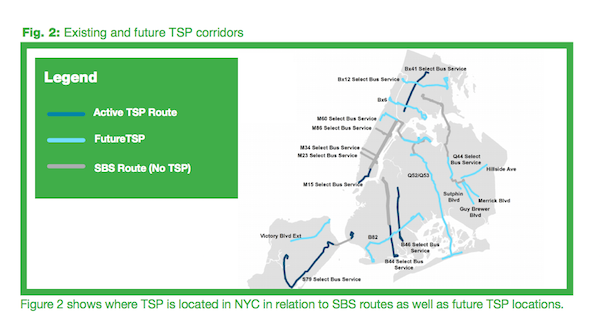
Decker emphasized that is not to say that TSP can’t work on Manhattan routes. So far, the only routes that have TSP implemented are Select Bus Service routes, which include the M15 — which runs between Second Ave. and E. 126th St. and Whitehall St. at South Ferry along First and Second Aves. — and two routes in Brooklyn, two in the Bronx, and one in Staten Island. Those six routes represent just two and a half percent of the city’s 236 bus lines, with none in Queens and just one in Manhattan. The observations made by the comptroller’s report about changed outer borough commuting patterns explain why those routes slated next are weighted toward Queens.
According to a BTC report titled “Waiting for the Light,” cities such as London and Los Angeles have been using signal priority for nearly two decades. Additionally, average weekday speeds of buses in Los Angeles, Philadelphia, and Washington, DC, are all greater than 9 mph, compared to 7.4 mph in New York. Despite having TSP on the M15, that route still runs at about 4.8 mph.
“We have to do something to speed up buses because what’s happening is that people aren’t riding buses because they can’t get to where they want on time,” Nick Sifuentes, executive director of the Tri-State Transportation Campaign, said.
“Transit signal priority is part of the package of things to help buses,” he said, along with all door-boarding, countdown clocks to advise passengers of wait-times, and additional bus lanes.
